Cornbury Park, venue for the Field & Country Fair
Cornbury Park, Oxfordshire, the seat of Lord and Lady Rotherwick, is celebrated for its 17th-century architecture
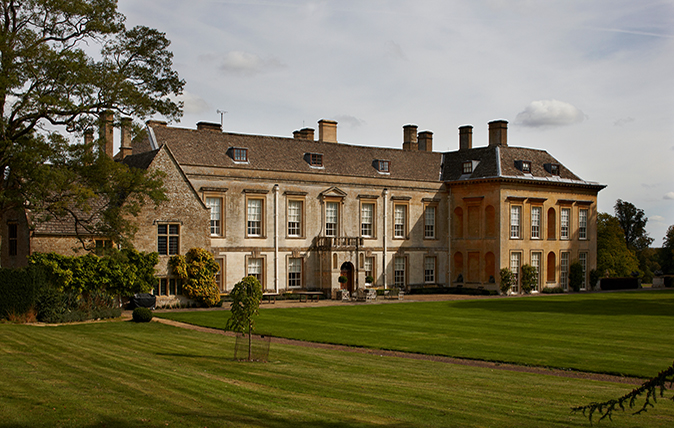

Cornbury Park is celebrated for its 17th-century architecture and also serves today as a modern family home, as John Goodall reported in the pages of Country Life in September 2012. Photographs by Paul Highnam.
To stand at the front porch of Cornbury Park and look out over the landscape is to experience the illusion that Oxfordshire is a sparsely populated county—park, woodland and fields stretch away in every direction without a sign of habitation or development. There is good historic reason for this extraordinary view. Cornbury stands adjacent to the former royal forest of Wychwood, a huge medieval hunting reserve of woodland and pasture extending across a swathe of western Oxfordshire.
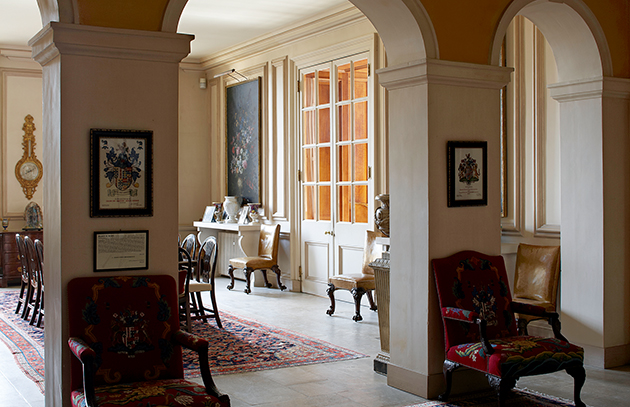
The pleasures of the chase brought all the kings and queens of England to this area into the 17th century. They developed lodges and residences for their own accommodation in and around the bounds of the forest. Cornbury is one such, but others include Blenheim (successor to the royal manor of Woodstock) and Ditchley. Collectively, these residences, with their associated parkland and chases—and Wychwood itself, which was only deforested in 1862—have preserved the huge expanse of countryside that opens out from Cornbury.

The earliest reference to a residence at Cornbury occurs in 1337, when the exchequer was ordered to pay for ‘a stone wall about Cornbury Park… and a house called “Logge” of stone and timber in that park, and a dike of wood forty feet broad by the circuit of the park, and two deer leaps in the park’.
Interestingly, there are several examples of hunting lodges in the period receiving nicknames such as Log. John of Gaunt’s favoured lodge outside Leicester Castle, for example, was called The Bird’s Nest. Cornbury Park passed through the hands of a litany of prominent individuals in the course of the Middle Ages: members of the royal family, courtiers and favourites.
Little is known, however, of its medieval development and the fabric of the present house has developed since the 16th century. Its buildings form an irregular courtyard that is partially open to the rear. Each of the three full façades to the house can be broadly understood as the product of a distinct phase of development.
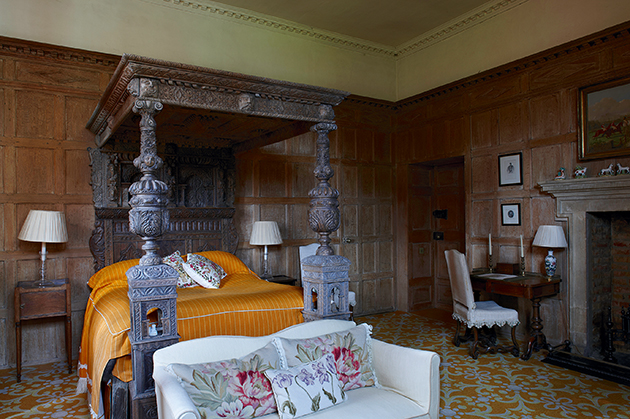
To the north is a confusion of gables that survive from the Tudor house. Their scale and plan suggest that they were built to incorporate the services of the house, a function that has persisted to the present. Included on the first floor within them, however, is one fine bedroom. It is reliably attested that Elizabeth I’s favourite, Robert Dudley, Earl of Leicester, died at Cornbury in 1588. And this room, with its Tudor wainscoting and four-poster bed, has become popularly identified as the scene of his death. If that is the case, the present furnishing of the room nevertheless owes much to 20th-century restoration and sensibility.
Exquisite houses, the beauty of Nature, and how to get the most from your life, straight to your inbox.
In the 1630s, the Tudor house was given a new frontage to the southby the rich and unmarried Earl of Danby. A trusted intimate of Charles I, he was granted Cornbury in perpetuity by the King and, during his retirement from affairs, set about improving it in 1632–3. He employed for the purpose the sculptor and mason Nicholas Stone, a figure primarily familiar today for his Mannerist funerary monuments and involvement in the Banqueting House at Whitehall. Stone also worked on another of Danby’s projects, the Botanic Gardens at Oxford.
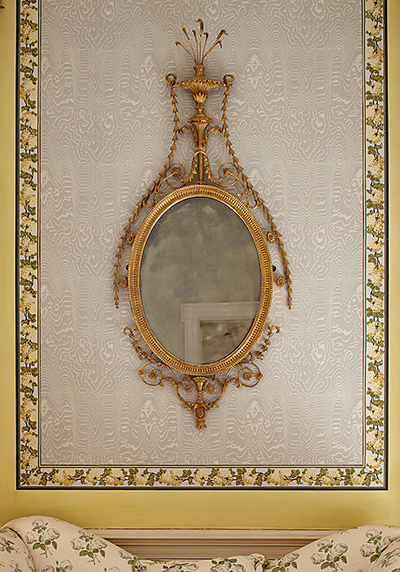
As his notebook succinctly notes: ‘Agreed with Right Honbl Lord Earell of Danby for to make 3 ston gates in to the phiseck garden Oxford and to desine a new hows for him at Corenbury in oxfordsheer and to deruckt the workmen and mak all thar… I was thar in 2 years 33 times and my covenant of accord with his lordp was 1000l.’ To those who saw it erected, Stone’s Classical façade would have appeared strikingly regular and restrained. In its original form, it is likely that the windows had stone mullions and transoms rather than sashes.
No external touch of Gothic detailing is visible, although the internal layout was more conservative. In the centre of the ground floor was a great hall entered through a vaulted central porch and apparently laid out in conventional medieval fashion with a screens passage at one end. The hall was covered by a coved ceiling of plaster ornamented with bold geometric designs and cartouches to either end. Some sense of this lost feature is supplied by the surviving ceilings of bedrooms on the first floor. Danby died without heirs in 1644 and, after the Civil War, Cornbury came into the hands of the courtier and historian Edward Hyde. He was created Earl of Clarendon and Viscount of Cornbury in 1674 and turned to another figure in the royal works, Hugh May, to improve the house. May had been employed since 1660 as paymaster overseeing the upkeep of royal palaces, and from 1665, advised on the repair of St Paul’s in London.
In 1669, Wren was promoted over May’s head in the King’s works (and at St Paul’s). Nevertheless, he did oversee Charles II’s remodeling of the Upper Ward at Windsor from 1674. At Cornbury, May’s first project was the erection of a new stable block, which was complete by 1664. This defines the outer court of the house and could easily be mistaken for a Georgian building.
In a letter of January 1666, Clarendon announced yet grander changes: ‘Mr May (who you know governs at Cornbury) hath made a design for a very convenient house… which will be begun this spring.’ The house was, in fact, a new western range laid out at right angles to that built by Stone. Its façade is again laid out in an idiomatic Classical style with a central pediment supported on pilasters that rise through the full height of the building. To integrate this range with Stone’s work, the latter was refenestrated and its roof adapted. Within the central pediment, presumptuously inscribed, were the words from Virgil: ‘God made this pleasant place for us.’
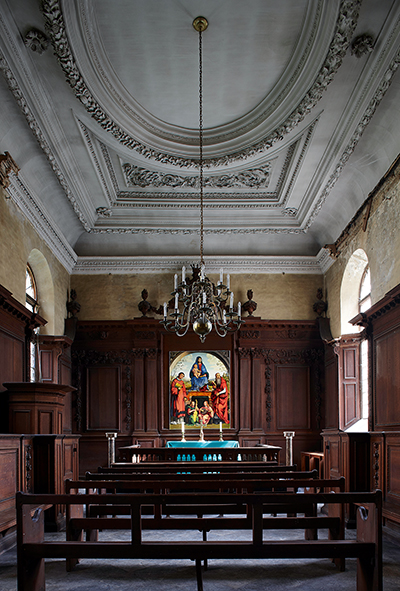
In the event, Clarendon was driven into exile when work to the new façade was under way. As a result, it was his son who completed the west front and also realized another feature of the new house proposed by May, the chapel. This projects into the courtyard of the house and its interior is superbly finished with fine wainscoting and a deeply moulded plaster ceiling. The chapel is described by the antiquarian Robert Plot as being in the course of construction in 1677. Plot also noted that the Earl proposed to floor the chapel with a local stone called forest marble with ‘the shapes of sea fish’ in it.
Cornbury Park today bears relatively little evidence of the changes it went through in the 18th and 19th centuries. The property was sold by 2nd Earl of Clarendon to his brother, the Earl of Rochester. Then, in 1751, it was purchased by the trustees of Charles Spencer, 3rd Duke of Marlborough. An inventory of the paintings made at the time of the sale underline the quality of its collections as amassed by Clarendon. It remained in the Marlborough estate until 1894, and was adapted in about 1850, both internally and externally. Few traces of this work, however, have survived the 20th-century history.
In 1901, Cornbury was bought by the collector Vernon Watney, who employed the architect John Belcher to reorder the house. Belcher perhaps recommended himself to this particular project through his joint publication with Mervyn MacCartney of Later Renaissance Architecture in England (1901).
Certainly, he attempted to cast some of the work in an English period style. Overall, however, his approach was certainly not historicist or restrained. Belcher effectively turned the house around by erecting an elaborate Italianate porch that almost closed off the fourth side of the courtyard. Connected to this by a vaulted corridor was a galleried stair hall that was set behind the angle of the two 17th-century frontages of the house. The dining room and great hall in Stone’s range were reordered, the latter as a grand two-storey interior covered by a coved, plaster ceiling. Some of the ceiling detail was modeled on surviving fragments of Stone’s original found during the works.
The full extent of Belcher’s work is documented in a sensationally lavish book compiled and privately published by Watney in 1910. Cornbury and the Forest of Wychwood is a voluminous history with a plan and photographic illustrations of the newly restored building, its gardens and park.
The book reflects a vogue for such scholarly publications: St John Hope’s great two-volume study of Windsor published by Country Life in 1913, for example, or Lord Curzon’s volumes on his castles at Bodiam, East Sussex (1926) and Tattershall, Lincolnshire (1929).
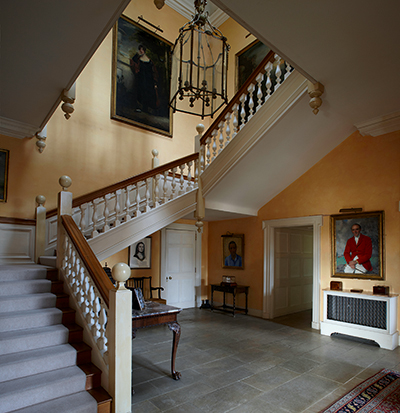
Little of the house that Belcher created has survived to the present. The porch had vanished even during the ownership of Mr Witney’s son (see Country Life, September 22, 1950). Further changes to the interior, however, followed the purchase of the house by Lord and Lady Rotherwick. In 1967, they approached John Fowler and Philip Jebb to reorder the interior once more. Belcher’s two-storey interiors were swept away to create additional bedrooms on the upper floor and the ground-floor rooms were again adapted. As they presently exist, the interiors constitute one of the most complete survivals of Fowler’s later work.
The present Lord Rotherwick inherited the estate in 1996, and, with his wife, has made important changes to its management. Properties within the park have been developed and leased out to businesses, and, since 2004, the estate has been regularly used for a small number of large public events, such as the Wilderness Festival of music.
It also hosts charitable events, such as an annual walk for Rosy, a respite nursing charity of which Lady Rotherwick is patron. The house accommodates weddings, too, and has been used as a film venue, initiatives that herald a vibrant 21st century for the house.
** The Field & Country Fair takes place from June 10-12 at Cornbury Park

John spent his childhood in Kenya, Germany, India and Yorkshire before joining Country Life in 2007, via the University of Durham. Known for his irrepressible love of castles and the Frozen soundtrack, and a laugh that lights up the lives of those around him, John also moonlights as a walking encyclopedia and is the author of several books.
-
 ‘Calf’s brains have a bland, gentle richness that soothes and cossets': Tom Parker Bowles on the joys of eating offal
‘Calf’s brains have a bland, gentle richness that soothes and cossets': Tom Parker Bowles on the joys of eating offalEating offal it is more sinned against than sinning, but it offers the ultimate in magnificent, fully immersive eating.
-
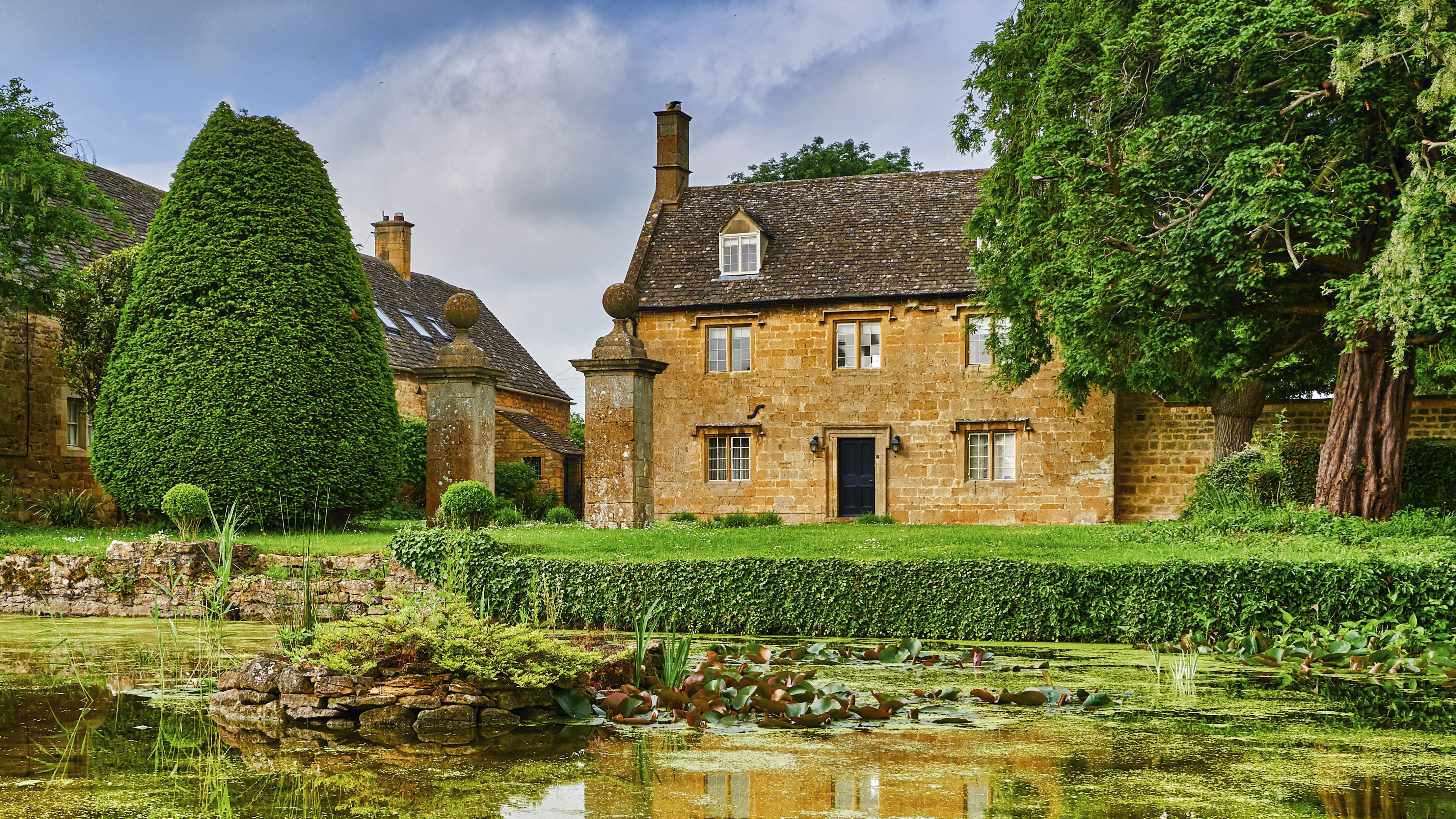 The wave of downsizing about to hit the property market in the UK
The wave of downsizing about to hit the property market in the UKThe Chancellor of the Exchequer's Budget — and specifically the 'Mansion Tax' — has fired a starting pistol for downsizers, and the waves will wash across the entire property market. Annabel Dixon spoke to property experts across the country to gauge how it will play out.